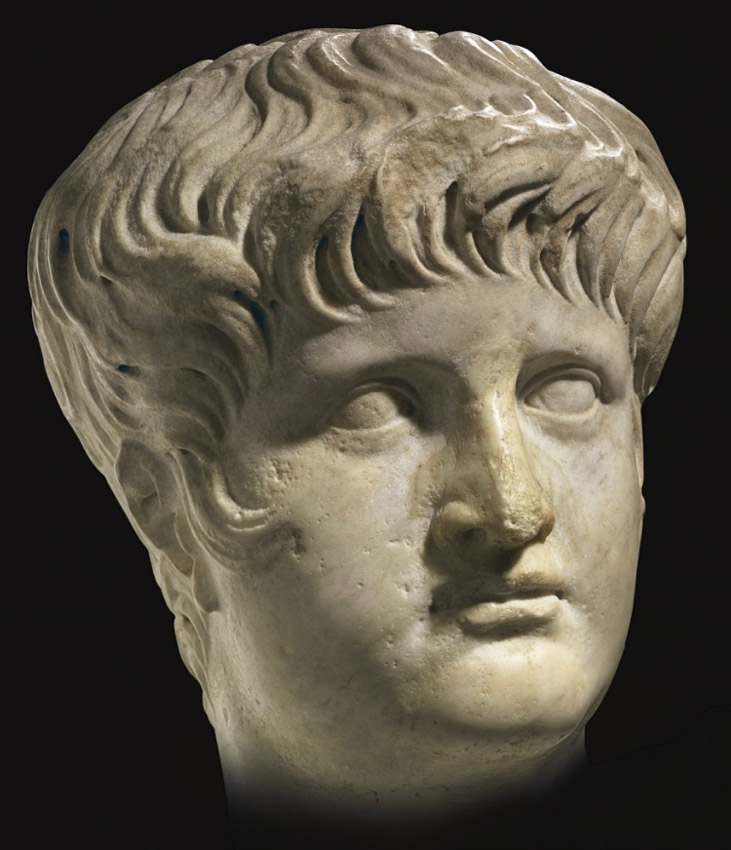
Height 29.2 cm. Christie’s Fine Art Auction House, New York
Portrait head of the emperor Nero.
Height 29.2 cm.
Christie’s Fine Art Auction House, New York.
Provenance
with Galerie Mythes et Legends, Paris, 1984.
with Royal-Athena Galleries, New York, 1984.
with Summa Galleries, Beverly Hills, mid 1980s.
Christie’s Fine Art Auction House, New York, Rockefeller Plaza. Sale 2174 Lot 170, 3 June 2009.
Estimate: $80000—
CIRCA 59—
Depicted with a full, fleshy face, his wavy hair brushed forward and pushed up at the forehead into a crest, with parallel locks breaking right across his forehead, and left above his right eye, with long curving sideburns, the wide unarticulated eyes beneath modelled brows, his lips pressed together, the protruding chin rounded.
11½ in. (29.2 cm.) high.
Lot Notes
The Emperor Nero (Nero Claudius Caesar Augustus Germanicus) was born December 15th, 37 A.D. to Gnaeus Domitius Ahenobarbus, first cousin to the Emperor Claudius, and Agrippina Minor, sister to the Emperor Caligula. Nero was later adopted by his uncle, the Emperor Claudius, and then succeeded him in 54 A.D. He was the fifth and final ruler of the Julio-Claudian Dynasty. Ancient sources such as Tacitus, Suetonius, and Cassius Dio portray Nero as a profligate ruler, being accused of acts like executing his mother and celebrating while Rome was consumed by fire in 64 A.D. Facing certain execution due to revolt of the governor Servius Sulpicius Galba and the public response to his renowned behavior, Nero committed suicide on June 9th, 68 A.D.
Despite the fact that the Senate issued a damnatio memoriae following his suicide, enough portraits of Nero survive that a typological sequence has been compiled. Five types have been identified that relate to events in Nero’s life. The present head corresponds to type four, which appeared in 59 A.D. and probably celebrated his quinquennium, the fifth year of his rule. Type four displays a new coiffure, with a crest of curving locks above the forehead, and a fleshier face. For another example of the type see the head from the Palatine Hill, no. 112 in Kleiner, Roman Sculpture.